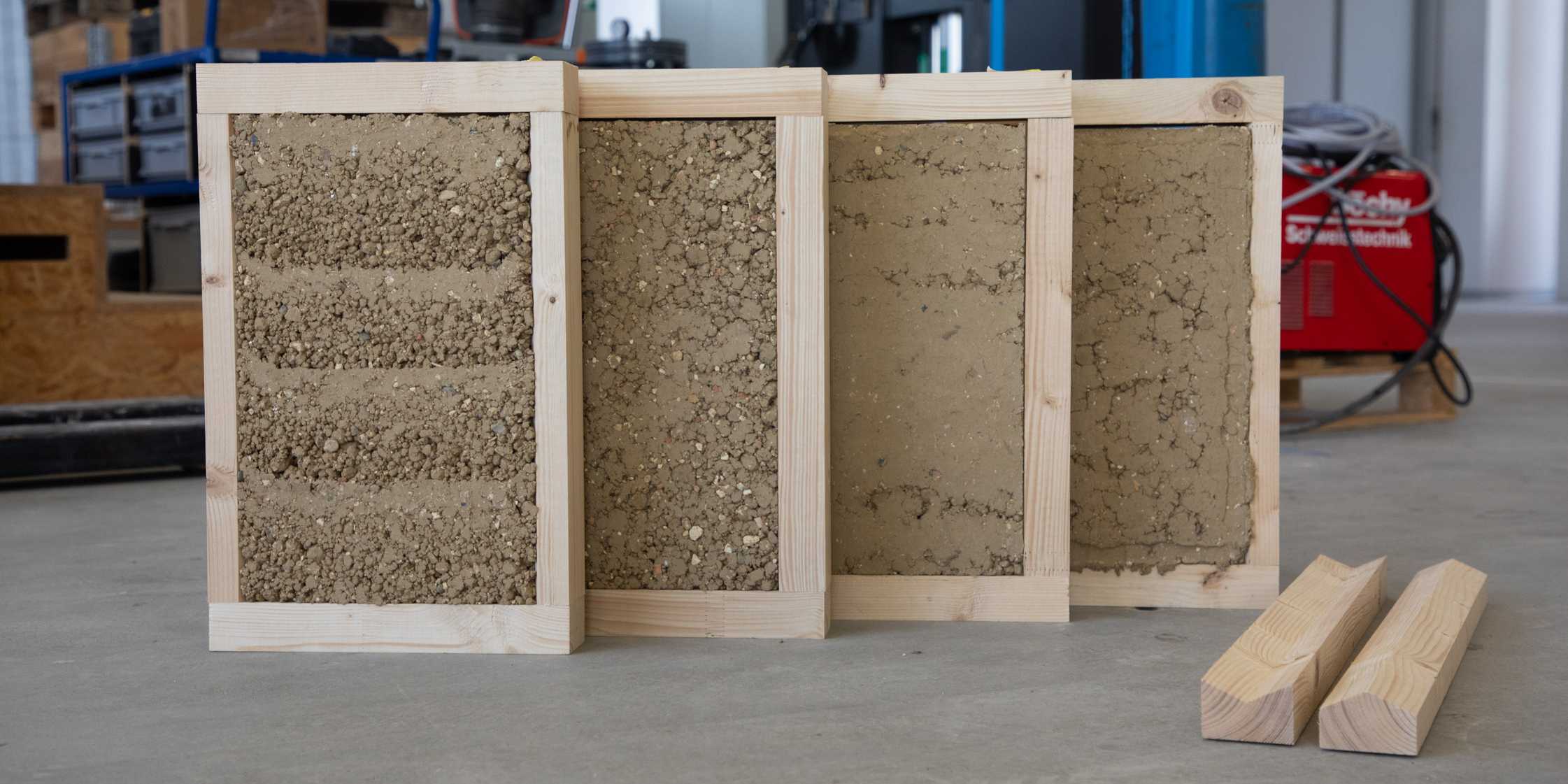Two flagship projects from Innosuisse have been launched at ETH Zurich with the aim of transforming the Swiss construction industry in a sustainable way: While "Swircular" lays the foundation for a circular construction industry, "Think Earth" enables regenerative construction with timber and earth.

In Kürze
- Current materials and practices in the Swiss construction industry are harmful to the climate, resource-intensive and generate a lot of waste.
- Two collaborations from research and industry under the leadership of ETH Zurich are working on making the local construction industry recyclable and climate-neutral.
- With these flagship projects, Innosuisse is promoting systemic innovations for the transformation of the economy towards net-zero greenhouse gases.
The Swiss construction sector currently accounts for around 70 per cent of domestic material consumption and 80 per cent of the country's waste - mainly from the demolition and construction of new buildings - and is responsible for around 24 per cent of the country's greenhouse gas emissions. Climate-friendly and resource-conserving materials and processes are lacking.
This is where two Innosuisse-funded flagship projects led by ETH Zurich come in. Think Earth aims to establish regenerative construction with timber and earth in practice. And Swircular seeks to create a digital ecosystem for circular construction in Switzerland. In both projects, scientists, engineers and architects from ETH Zurich are working together with other academic institutions and numerous partners from the construction industry. Both collaborations began in 2024 and will run for five years.
The two projects at a glance:
Think Earth - Regenerative construction
The Think Earth project aims to develop innovative construction methods that are not only sustainable but also regenerative. "It's about using materials and methods that protect the environment and at the same time contribute to its restoration," explains Andrea Frangi, Professor of Timber Structures at the Department of Civil, Environmental and Geomatic Engineering at ETH Zurich and head of the project.
The focus lies on two of humanity's oldest building materials: timber and earth. According to Think Earth project manager Patrick Fleming, these timeless materials not only store carbon and can be readily reused, but also are complementary and have excellent properties in terms of thermal insulation, indoor climate, acoustics and fire protection. One aspect of the project focuses on flexible hybrid elements made of timber and earth, combining the best of both materials.
Think Earth brings together researchers from ETH Zurich, EMPA, Lucerne University of Applied Sciences and Arts and the Bern and Eastern Switzerland Universities of Applied Sciences with 51 implementation partners from the entire construction sector. The endeavour is divided into ten sub-projects, ranging from basic materials science and production processes, prototypes and case studies, to new building codes and standards for practical application.

The first of a total of five case studies has already been realised: The external page Manal Pavilion made of earth-based materials, timber and recycled concrete was initiated by ETH spin-off Oxara and recently opened on the campus of Lucerne University of Applied Sciences and Arts in Horw. The building combines the potential of regenerative construction with the principles of the circular economy.
Swircular - a circular construction ecosystem
For Catherine De Wolf, reusing materials is essential for sustainable construction. "However, despite growing environmental awareness in the industry, there are a number of barriers to the transition to a circular economy," says the Professor of Circular Engineering for Architecture at the Department of Civil, Environmental and Geomatic Engineering. These challenges include fragmented and incomplete information about the building stock and the materials used, as well as a lack of processes to keep building resources in the cycle.
De Wolf sees digitalisation as the key to overcoming these hurdles. Under her leadership, the Swircular project will create a digital ecosystem for circular construction in Switzerland. Project manager Arabelle de Saussure explains: "Our vision is a network of stakeholders, digital tools and reliable data that makes it possible to track materials throughout their life cycle and exchange relevant information."

By means of digital building inventories and product passports for building materials as well as models for construction management, the project aims to create a common basis for circular processes. Other focal points are suitable legal and economic framework conditions as well as demonstrators for practical use.
To this end, Swircular connects experts from ETH Zurich, Empa, Bern University of Applied Sciences and Zurich University of Applied Sciences with specialists from 24 implementation partners from the entire value chain of the Swiss construction industry.
Impetus for sustainable change
With its flagship initiative, the Swiss funding agency Innosuisse aims to promote systemic innovations that help overcome major economic and social challenges. The topic of the 2023 call for proposals was "disruptive solutions for the transition to a net-zero world".






